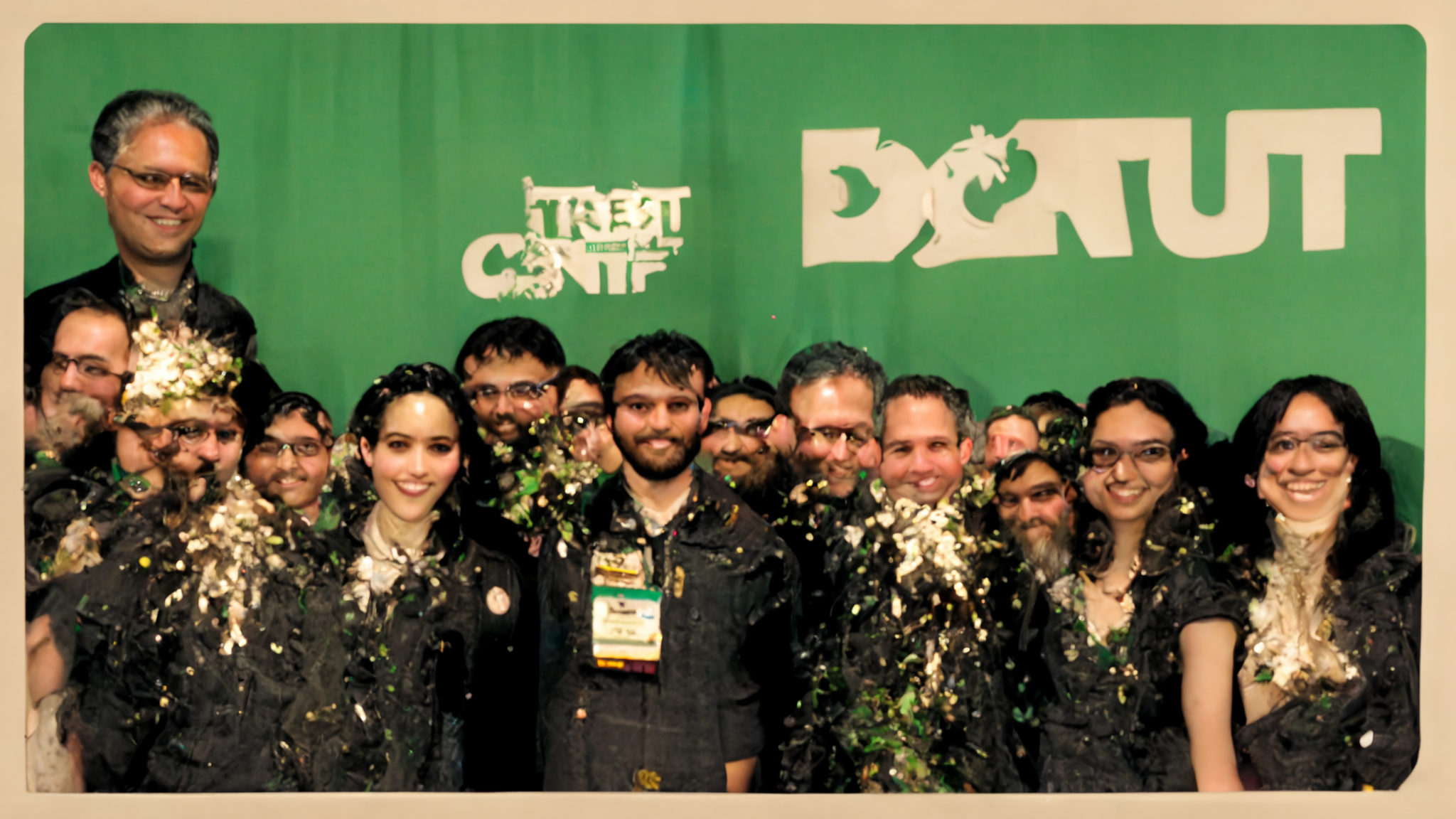Category: TECHNOLOGY
MarqVision grabs $20M to nab counterfeiters with an AI-powered IP protection platform
As of 2020, the clothing sector lost about $27 billion in annual sales due to counterfeits, an illicit trade that results in huge losses to both brands and buyers. Clothes, accessories and luxury goods are the most popular product items for counterfeiting, according to the 2022 intellectual property crime threat assessment report. But that’s not where the problem starts and ends: the explosion of digital content has also led to a wide number of digital counterfeiters as well.
Image Credits: MarqVision (opens in a new window) under a license.
MarqVision has built an AI-powered intellectual property (IP) protection platform that monitors both e-commerce marketplaces and digital content, automatically detecting counterfeits and removing them from online sales and distribution. And now, the startup has raised $20 million in Series A funding to continue expanding its platform.
The company, based in Los Angeles and originally incubated at Y Combinator, says its customers — which include fashion labels like Ralph Lauren and Kangol, LVMH, crystal icon Baccarat, as well as media behemoth Pokemon — use MarqVision to scan places where their brands are most likely to be misappropriated.
These include the top 1,500 online marketplaces globally, as well as popular social media platforms that are becoming increasingly used for commerce, NFT platforms, gaming sites and other places where counterfeit products might appear. It says that its tech is already leading to more than 20,000 enforcements weekly. Its founding team has roots in Asia — specifically Seoul — and it claims to have the most extensive IP enforcement platform in the region, an important point given that some 90% of counterfeit sales globally are traced back to Asia.
DST Global Partners and Atinum Investment led the latest funding along with its existing backers SoftBank Ventures, Bass Investment and Y Combinator. The Series A funding brings its total raised to $25 million, including a seed round of $5 million in 2021. The company is not disclosing its valuation.
The challenge that MarqVision is tackling is the speed and scale of counterfeit sales.
Millions of counterfeits are traded in real-time, and the opportunity, so to speak, is wide: it impacts both small and large brands and selling platforms. Companies like Amazon have developed extensive IP protection strategies over the years to proactively track and take down fake goods, but the argument here is that even this is not enough (and that’s saying nothing of the thousands of platforms smaller than Amazon that lack the resources to manage this on their own).
In other words, as with any digital challenge, the problem with fake goods — be it products or content — is one of outsized scale, one that is hard, if not impossible, for humans alone to tackle.
Lee and CBO of MarqVision DK Lee, with other friends from Harvard and MIT, founded MarqVision in 2020. Lee approached the problem initially from a legal perspective when he was still a Harvard law student. Interested in the field of IP, he realized that counterfeiting …read more
Self-Driving Truck Accident Draws Attention to Safety at TuSimple
The leading autonomous-truck developer blames human error, while analysts say it is the technology. Regulators are investigating. …read more
Microsoft puts its RiskIQ acquisition to work
Microsoft today added two new features to its Microsoft Defender security platformMicrosoft Defender Threat Intelligence and Microsoft Defender External Attack Surface Management. These features are based on the company’s acquisition of RiskIQ and with this launch, Microsoft is now bringing some of RiskIQ’s core features to its own security platform (all while RiskIQ continues to operate its own services, too).
“Our mission is to build a safer world for all — and threat intelligence is [at] the heart of it,” Microsoft’s Vasu Jakkal told me. “If you don’t know what’s happening in the world around you, it’s very hard to understand what to do about it and how to act on it. Microsoft has the largest breadth and depth of threat signals today — we are tracking, as we just announced in our earnings, 43 trillion signals [each day] which we see from identities, from devices, from platforms, from email, collab tools.”
With Defender Threat Intelligence, Microsoft is using RiskIQ’s technology to scan the internet and provide additional data to the existing Defender real-time service to help security teams proactively secure their infrastructure. Microsoft, of course, already had a large signal map to power its Defender platform, but Jakkal noted that RiskIQ’s data not only helps enrich this existing data set but also enables an additional layer on top of Defender that gives security teams a view of the entire attack chain.
“They can see the entire attack chain, they can act on it and then — combined with their own human intelligence —– they can see where the attack is going and how to proactively prevent it,” Jakkal explained.
Image Credits: Microsoft
The service also provides users with a library of raw threat intelligence and analysis from Microsoft’s security experts, which in turn should help security teams find, remove and block adversary tools that may be hidden within their organization.
Meanwhile, the new external attack surface management service helps these security teams understand how a potential attacker sees their network. Like similar services, it provides security teams with a way to discover all of their resources and find those that are unknown and/or unmanaged. Most businesses that start using a service like this end up being surprised by how many internet-facing unmanaged assets they find.
“All organizations are asking the question: how secure am I? It’s such a simple question but it’s so hard to answer that question. Because the first point is, well, first we need to understand what’s happening in the world of threats. And we need to understand what that looks like. The second thing we need to understand is where our resources are,” Jakkal noted. With these new tools, Microsoft is giving security teams more data to work with to protect their networks and other assets.
https://techcrunch.com/2022/08/02/microsoft-puts-its-riskiq-acquisition-to-work/
Ottonomy.IO raises $3.3 million to expand network of autonomous robots for deliveries
Ottonomy.IO, a startup working on solving delivery problems using autonomous robots, has raised $3.3 million in a seed funding round as it looks to expand its market and deploy robots to existing customers.
Led by Bengaluru-based Pi Ventures, the latest funding round included participation from Connetic Ventures and Branded Hospitality Ventures. Sangeet Kumar, founder and chief executive of Uttar Pradesh-based Addverb Technologies, also joined the round.
Founded in late 2020 by Ritukar Vijay along with Pradyot Korupolu, Ashish Gupta and Hardik Sharma, New York-headquartered Ottonomy.IO develops robots that feature sensors including 3D LiDAR sensors and cameras. The company, which employs about 25 people in the U.S. and India, also writes software and AI algorithms to power the sensors.
“One of the most important problems which we are trying to solve with these autonomous delivery robots is around labor shortages,” said Vijay, who serves as the chief executive of Ottonomy.IO, in an interaction with TechCrunch. He added that due to the labor shortages, there is a substantial increase in the hourly wages of laborers — to $18 to $45 per hour from $9 to $12 — in the U.S.
“So, that’s almost a 100% hike in hourly wages, making it very difficult for enterprise customers to provide the same services to the customers they were given earlier. And what happens at the end is that customers start paying more for deliveries.”
Ottonomy.IO’s autonomous robots help address the growing demand for last-mile deliveries and cater to emerging delivery requirements including indoor and curbside deliveries. The latter is specifically a type of delivery in which the item is delivered to a place such as a parking lot — not directly to the customers’ home or office address.
“That too is very labor intensive because somebody has to bring items from a store to the curbside in the parking lot,” Vijay said.
Ottonomy.IO co-founders Hardik Sharma, Ashish Gupta, Ritukar Vijay, Pradyot Korupolu (from left to right)
The robots built by Ottonomy.IO use high information mapping of the serviceable delivery areas to navigate and reach the consumer delivery locations. Once they reach their destination, the robots require a unique QR code that the customer received at the time of their order to unlock the hold area and retrieve the order, the startup said.
Ottonomy.IO did some initial pilot rounds with its autonomous robots before bringing its latest model, Ottobot 2.0. This is an evolution from the early pilots and includes fully customizable modular cabins, increased customer access and directional mobility, including a crab mode that allows the robot to navigate sideways.
The proprietary robot designed by Ottonomy.IO offers better accessibility to customers, the startup claimed.
“Even a person in a wheelchair can actually access packages from the robot which is very, very important,” Vijay said.

Ottonomy.IO’s robots are claimed to offer better accessibility support to customers
The executive also told TechCrunch that the robot has software …read more
Samsung launches user self-repair kits for Galaxy Devices
Way back in March, Samsung joined a growing number of hardware makers announcing self-repair initiatives. The list, which includes similar offers from both Apple and Google, finds companies proactively reacting to potential right to repair legislation. Both Samsung and Google teamed up with popular repair site iFixit for their offerings, providing low-cost tools to fix common device issues.
Beginning today, the companies are providing kits to repair broken screens, back glass and charging ports on the Galaxy S20, S21 and Tab S7+ tablet to users in the States. The kits include parts, tools and step by step repair instructions, coupled with a return label to send the broken bits back to Samsung. Kits for additional devices and repairs will roll out down the line.
It’s a different approaches than Apple’s which finds the company shipping iPhone owners professional-grade equipment, including same glue melting machine its Geniuses use in-store. The offering has received negative reviews for inaccessibility and pricing, leading many to suggest that making self-repair difficult is, perhaps, part of the point. The iFixit tools, meanwhile, lower the barrier of entry considerably, but likely lack some of the precision of the pro-level offerings.
Image Credits: Samsung
I’d say anything that makes repairs more accessible to users – and delays devices’ end of life – is probably a net positive. How many people will actually take them up on that offer is another question entirely.
The kits are available through iFixit and Samsung retail stores.
https://techcrunch.com/2022/08/02/samsung-launches-user-self-repair-kits-for-galaxy-devices/
Vetted lands $15M for AI that helps shoppers find top products and deals
Vetted, the startup formerly known as Lustre, today announced that it secured $15 million to fund development of its AI-powered platform for product reviews. The cash infusion comes as part of a Series A led by Insight Partners, with participation from Index Ventures, Bling Capital, Golden Ventures and angels including former Meta VP of commerce Shiva Rajaraman, and founder and CEO Stuart Kearney tells TechCrunch that it’ll be invested in scaling Vetted’s machine learning technologies.
Kearney describes Vetted’s platform, which launched broadly today, as a “product search engine” for “discovering the brands and products most recommended for your needs. He started the company with Tim Etler and Tom Raleigh after a stint working on “smallsats” (spacecraft about the size of a kitchen fridge) at the NASA Ames Research Center and as a systems engineer at the Australian Department of Defense.
“We founded Vetted because we felt that shopping online has become an overwhelming and frankly anti-consumer experience,” Kearney told TechCrunch via email. “People shouldn’t have to spend hours sifting through indistinguishable products littered across thousands of ad-infested sites loaded with fake reviews and unreliable information.”
Vetted surfaces reviews for a given product from The New York Times’ Wirecutter, Reddit, YouTube and other “reputable” sites, according to Kearney (although some might argue that Reddit doesn’t always meet that criterion). Available on the web or as a Chrome extension, the platform compares prices across merchants, tracks changes and delivers alerts when there’s a sale.
Image Credits: Vetted
There’s plenty of product comparison tools out there, like PayPal-owned Honey and Paribus (now Capital One Shopping). But what sets Vetted apart is its use of AI to identify the top products in different categories, Kearney says. Vetted ranks products based on more than 10,000 factors, including reviewer credibility, brand reliability, enthusiast consensus and how past generations performed. As prices change and new products and reviews appear, the platform updates the rankings while a team of 30 “product experts” work to make sure the results are accurate.
“We’ve built our own named entity recognition technology to identify mentions of brands and products. We then analyze the users’ sentiment towards them and use vectorization techniques to group together similar products to do further analysis,” Kearney said. “This enables us to transform the mess of thousands of threads into a well-organized summary of, for example, Reddit’s opinion on a given product or brand.”
Kearney wasn’t forthcoming about how Vetted’s ranking algorithm weighs the various factors and quantifies the more subjective aspects of product reviews, like “credibility.” He also didn’t disclose what work, if any, has been done behind the scenes to ensure Vetted analyzes reviews from different groups of people equally. AI models trained to understand a particular vernacular (e.g. standard English) tend to do poorly when exposed to unfamiliar text.
Kearney says that part of new the funding will go toward deploying more advanced search technologies, as well as AI systems to organize and understand product knowledge in forums. He notes that …read more
Yelp updates its Android app with a redesigned home feed and map-based search
Yelp updating its Android app to introduce a new vertical Home Feed and search results with maps for better restaurant discovery, following last year’s release of a similar update for Yelp’s iOS users.
The company said the new vertical feed features highlights from local businesses and popular dishes from the restaurants around you. Yelp also plans to soon feature user-generated content, like reviews, on the app’s home screen.
The Android redesign also brings an updated map to explore functionality to bring a visual element to search. This comes after Instagram rolled out a searchable map experience for place discovery last month.
The changes arrive at a time when younger generations are searching and discovering more places of business through social networks and visual content, instead of more traditional utility-like services. At a recent conference, for example, Google’s Senior Vice President Prabhakar Raghavan noted that younger users are turning to apps like Instagram and TikTok to find new places.
Yelp’s new Home Feed design for Android Image Credits: Yelp
With the update, Yelp redesigned the sign-up page and business pages with a focus on highlighting photos. The company said it also made backend improvements for a snappier app experience.
“In addition to our improved homepage, search results, and business pages, we’ve also made significant enhancements on the backend to improve app load times, significantly reduce app errors, and provide a better overall app experience. Users can also expect to see new Android updates roll out faster in the future,” Yelp noted in a statement.
Yelp’s new update is rolling out to Android users in 900 U.S-based cities in the coming weeks.
Earlier this year, the company expanded its partnership with Hazel Analytics to show accurate health ratings across 700,000 business pages.
It’s paintbrushes at dawn as artists feel the pressure of AI-generated art
If you’ve been anywhere close to the interwebs recently, you’ll have heard of DALL-E and MidJourney. The types of art the neural networks can generate — and with a deeper understanding of the strengths and weaknesses of the tech — means that we are facing a whole new world of hurt. Often the butt of tasteless jokes (How do you get a waiter’s attention? Call out “Hey, artist!?”), computer-generated art is another punchline in the “they took our jobs” narrative of human versus machine.
To me, the interesting part of this is that robots and machines taking certain jobs have been begrudgingly accepted, because the jobs are repetitive, boring, dangerous or just generally awful. Machines welding car chassis do a far better job, faster and safer, than humans ever could. Art, however, is another matter.
As with all technology, there’s going to be a time when you no longer trust your own eyes or ears; machines are going to learn and evolve at breakneck speed.
In the recent movie “Elvis,” Baz Luhrmann puts a quote in Colonel Tom Parker’s mouth, saying that a great act “gives the audience feelings they weren’t sure they should enjoy.” To me, that’s one of the greatest quotes I’ve heard about art in a while.
Commercial art is nothing new; whether your mind goes to Pixar movies, music or the prints that come with the frames in Ikea, art has been peddled at great scale for a long time. But what it, by and large, has in common, is that it was created by humans who had a creative vision of sorts.
The picture at the top of this article was generated using MidJourney, as I fed the algorithm a slightly ludicrous prompt: A man dances as if Prozac was a cloud of laughter. As someone who’s had a lifetime of mental health wobbles, including somewhat severe depression and anxiety, I was curious what a machine would come up with. And, my goodness; none of these generated graphics are something I’d have conceptually come up with myself. But, not gonna lie, they did something to me. I feel more graphically represented by these machine-generated works of art than almost anything else I’ve seen. And the wild thing is, I did that. These illustrations weren’t drawn or conceptualized by me. All I did was type a bizarre prompt into Discord, but these images wouldn’t have existed if it hadn’t been for my hare-brained idea. Not only did it come up with the image at the top of this article, it spat out four completely different — and oddly perfect — illustrations of a concept that’s hard to wrap my head around:
It’s hard to put words to exactly what that means to conceptual illustrators around the world. When someone can, at the click of a button, generate artworks of anything, emulating any style, creating pretty much anything you can think of, in minutes — what does it mean to be an artist?
Over the past week or so, …read more
Microsoft launches Outlook Lite for low-powered Android phones
Microsoft has launched its lightweight Outlook Lite Android app, which is suitable for low-end Android devices and regions with data connectivity issues. The app has a download size of less than 5MB compared to more than 80MB (depending on the device) for the regular version.
The app is currently available in select countries including Argentina, Brazil, Chile, Colombia, Ecuador, India, Mexico, Peru, Saudi Arabia, South Africa, Taiwan, Thailand, Turkey, and Venezuela. Microsoft said it will consider adding more countries to the list in the future. The company added this app to its Office 365 roadmap in June, so this launch hints toward a broader release.
Users can access emails, calendars, and contacts for Outlook.com, Hotmail, Live, MSN, Microsoft 365, and Microsoft Exchange Online accounts.
The firm claims that the Outlook Lite app is suitable to run on devices with less than 1GB RAM, and 2G or 3G network connectivity. It said that the app is also optimized to consume less battery.
“With Outlook Lite, our goal is to make Outlook more accessible to users who are on lightweight mobile devices across the world empowering them to achieve more,” the company said in a blog post.
Microsoft joins a plethora of lightweight apps designed by other companies meant for low-powered Android devices including Facebook Lite, Instagram Lite, TikTok Lite, Spotify Lite, and Pinterest Lite.
Microsoft is also testing a new Outlook app for Windows with a new design and collaborative features.
https://techcrunch.com/2022/08/02/microsoft-launches-outlook-lite-for-low-powered-android-phones/
Hackers abuse ‘chaotic’ Nomad exploit to drain almost $200M in crypto
Cross-chain messaging protocol Nomad has become the target of crypto’s latest nine-figure attack after hackers abused a “chaotic” security exploit to steal almost $200 million in digital assets.
Nomad, a token bridge that allows users to send and receive tokens between Avalanche (AVAX), Ethereum (ETH), Evmos (EVMOS), Moonbeam (GLMR) and Milkomeda C1 blockchains, was attacked on Monday, with hackers draining almost all of the protocol’s funds.
Approximately $190.7 million in crypto was stolen from the bridge, according to decentralized finance tracking platform DeFi Llama, which shows that the current total value locked — the amount of user funds deposited in a DeFi protocol — is less than $12,000 at the time of writing.
Nomad has yet to confirm how hackers were able to steal the funds. But according to samczsun, the head of security at web3 investment firm Paradigm, a recent update to one of Nomad’s smart contracts made it easy for users to spoof transactions. This meant that when a user transferred funds from one blockchain to another, Nomad allegedly never checked the amount, enabling the user to withdraw funds didn’t that didn’t belong to them. For example, a user could send 1 ETH, for example, and then manually call the smart contract on the other blockchain to receive 100 ETH. Blockchain audit company Zellic also came to the same conclusion.
“It’s like using a checkbook to withdraw funds from a bank, and the bank doesn’t verify if we actually hold enough money,” Adrian Hetman, tech lead of the triaging team at web3 bug bounty program Immunefi, told TechCrunch. “They only care that the check itself looks valid.”
12/ tl;dr a routine upgrade marked the zero hash as a valid root, which had the effect of allowing messages to be spoofed on Nomad. Attackers abused this to copy/paste transactions and quickly drained the bridge in a frenzied free-for-all
— samczsun (@samczsun) August 2, 2022
Samczun explains that, unlike most bridge attacks where a single culprit is behind the entire exploit, the “chaotic” Nomad attack was a free for all whereby opportunists flocked to steal funds from the bridge once word had got around, resulting in what the researcher described as a “frenzied free-for-all.” Blockchain security firm Peckshield said more than 41 addresses drained $152 million — or 80% of the stolen funds.
“All that was required to exploit it was to copy the original hacker’s transaction and change the original address to a custom one. Simple copy-paste,” Hetman added.
The incident affected Wrapped Ether (WETH), USD Coin (USDC), WBTC and other tokens that were drained from the bridge.
TechCrunch contacted Nomad but has yet to receive a response. However, the company took to Twitter to warn about impersonators trying to collect funds. “We’re aware of impersonators posing as Nomad and providing fraudulent addresses to collect funds,” it said. “We aren’t yet providing instructions to return bridge funds. Disregard comms from all channels other than Nomad’s official channel.”
In a separate tweet, Nomad confirmed it has notified law enforcement …read more
https://techcrunch.com/2022/08/02/nomad-chaotic-exploit-crypto/






